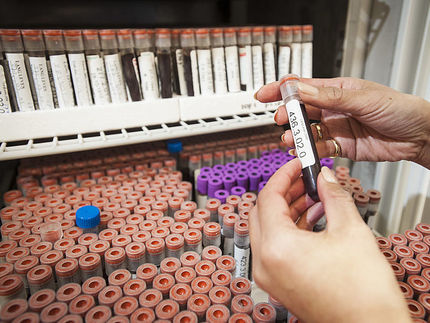Important aging mechanism revealed
African killifish as model organism
Nothobranchius furzeri, the African killifish, is the perfect model organism for research into aging processes because of its short lifespan, apparent signs of aging and a sequenced genome. Thus, researchers from the University of Veterinary Medicine Vienna and the Medical University of Vienna were able to show that histone deacetylases, which are important for cell cycle regulation are produced less in aging fish. In parallel, the team confirmed this aging mechanism in mice. The identification of epigenetic and thus, reversible changes could be a loophole to develop active compounds antagonising the aging process.

An important aging mechanism, a permanent reduction of histone deacetylases, was recently identified in the african Killifish, N. furzeri.
The Austrian Northo Project
People have long been dealing with questions about the mechanisms that make our body cells age and how to counteract these mechanisms. Due to their function in cell cycle regulation, histone deacetylases, HDACs, are considered to play an essential role in the cellular aging process and in the development of neurodegenerative diseases. A research team around Sabine Lagger from the Unit of Pathology of Laboratory Animals of the University of Veterinary Medicine Vienna, in collaboration with Gordin Zupkovitz and Oliver Pusch from the Medical University of Vienna analysed these connections and confirmed a clear mechanism in the extremely short-lived killifish from the onset of embryogenesis until the last phase of life.
Cell cycle inhibitor replaces positive regulation enzymes in the aging process
The short-lived turquoise killifish, Nothobranchius furzeri, has been an emerging model organism in aging research for several years. Since 2014, the Medical University of Vienna has been conducting research into this species in its Killifish Facility, which constitutes the only one of its kind in Austria. The species’ short lifespan of about four months is not the only argument, as N. furzeri also shows clear signs of aging such as dementia and cancerous lesions. Additionally a fully annotated genome is available. This “comprehensive package” enables analyses of cellular aging processes, virtually in fast forward motion.
“We analysed the expression of histone deacetylases because these proteins are often related to aging processes,” explained Lagger. HDACs are involved in mechanisms how the genome is transcribed in a particular moment. The DNA does not exist freely in cells but is wrapped around complex protein structures. It is, in a way, strategically packed. “Some parts can be modified by certain chemical modifications so that specific genes can be transcribed or not. Which parts are accessible or not depends on external factors, such as environmental conditions, stress, or endogenous processes, such as aging,” said the lead author.
The analyses done by the team showed that the expression levels of HDACs was constantly downregulated in aging killifish. This decrease of available HDACs resulted in the increasing production of the cell cycle inhibitor protein p21. The researchers also confirmed this dynamic in a mammalian animal model. “The HDAC-p21 connection was mirrored in the mouse. This even allows us to conclude that there is an evolutionarily conserved mechanism of cellular aging,” said Lagger.
Epigenetic background could open doors for an active compound strategy
Furthermore, the availability of HDACs and the connection with the aging process is interesting because it influences the epigenetic regulation of the cell cycle. “In contrast to genetic mutations in the DNA sequence, epigenetic changes are reversible. This could be an approach for the development of active compounds able to inhibit the described mechanism,” concludes Lagger.
Original publication
Most read news
Original publication
Gordin Zupkovitz, Sabine Lagger, David Martin, Marianne Steiner, Astrid Hagelkruys, Christian Seiser, Christian Schöfer, Oliver Pusch; "Histone deacetylase 1 expression is inversely correlated with age in the short-lived fish Nothobranchius furzeri"; Histochemistry and Cell Biology; 2018
Topics
Organizations
Other news from the department science
These products might interest you

Kjel- / Dist Line by Büchi
Kjel- and Dist Line - steam distillation and Kjeldahl applications
Maximum accuracy and performance for your steam distillation and Kjeldahl applications

AZURA Purifier + LH 2.1 by KNAUER
Preparative Liquid Chromatography - New platform for more throughput
Save time and improve reproducibility during purification

Get the analytics and lab tech industry in your inbox
By submitting this form you agree that LUMITOS AG will send you the newsletter(s) selected above by email. Your data will not be passed on to third parties. Your data will be stored and processed in accordance with our data protection regulations. LUMITOS may contact you by email for the purpose of advertising or market and opinion surveys. You can revoke your consent at any time without giving reasons to LUMITOS AG, Ernst-Augustin-Str. 2, 12489 Berlin, Germany or by e-mail at revoke@lumitos.com with effect for the future. In addition, each email contains a link to unsubscribe from the corresponding newsletter.

























































